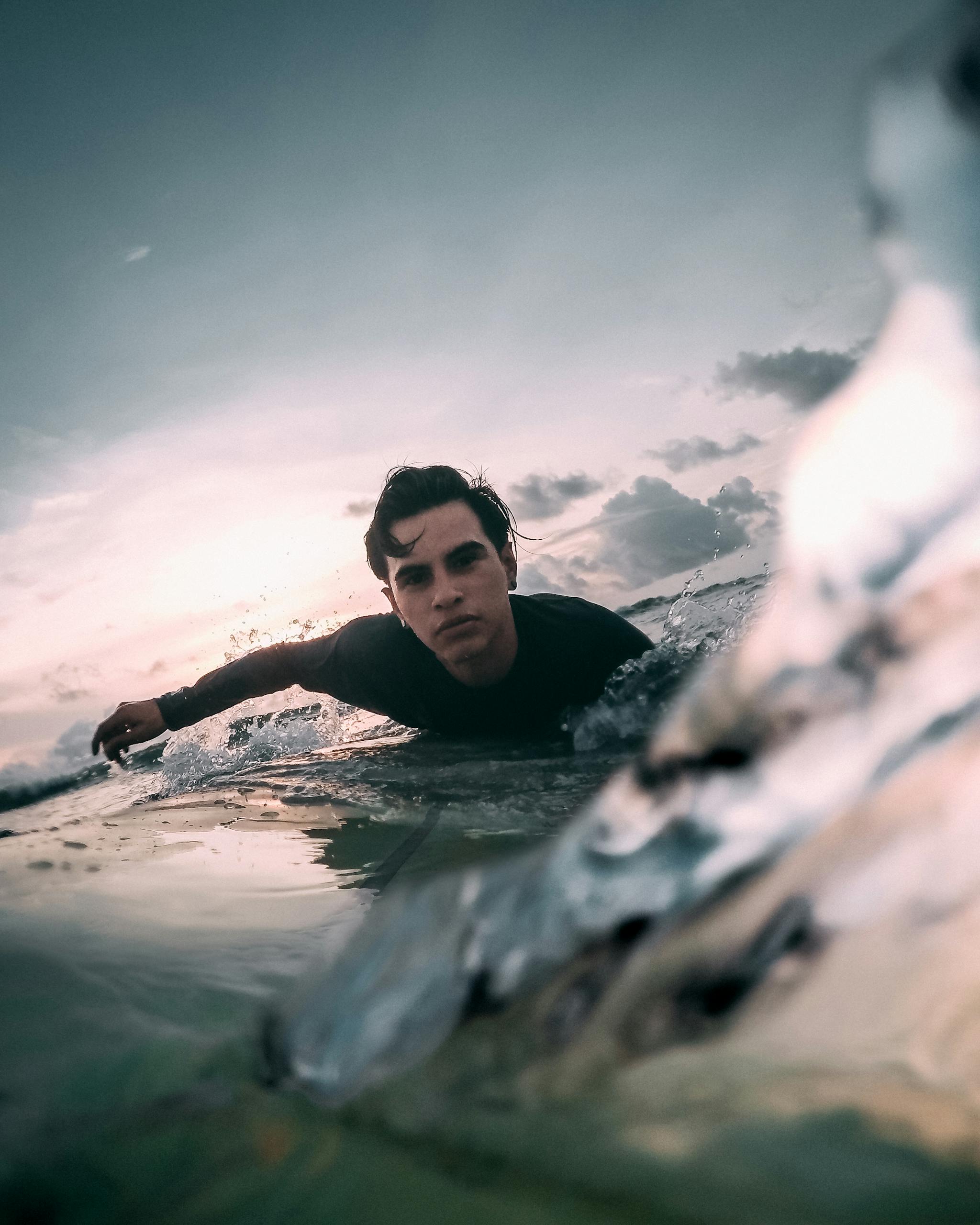How Do I Know if I’m Ready for a Triathlon Swim?

Your race has an 800-meter swim, so you swam 800 meters in the pool. Does that mean you’re ready to do your triathlon?
As we gear up for a new triathlon race season, a wave of anticipation and nervous energy washes over both new and seasoned triathletes when they think of the swim. Of all the tri race disciplines, the swim is the one where athletes are most likely to question themselves: “Am I ready? Should I be swimming more? Can I handle the open water?”
This nervousness can result in some well-meaning but often incorrect advice about preparing for your triathlon swim. Let’s look at what you really need to know.
Being ready is more than just covering the distance
A common misconception about getting ready for your triathlon swim is that if you can cover the exact distance of your race in a single session, you’re ready. While completing an 800-meter swim workout without stopping is an important milestone for an 800-meter swim race, there’s more to race prep than that.
You still need to fully prepare yourself for things that probably weren’t present in the pool workout, but will be on race day, including the dynamic conditions of swimming in open water and the adrenaline-fueled start of a triathlon.
Readiness transcends mere distance; it encompasses comfort, adaptability, and resilience in the water. Here’s how to gauge your preparedness beyond the black line of the pool:
Open-water acclimatization and water safety
Open water presents challenges like navigation, choppy conditions, and the absence of rest points. Regularly practicing in similar conditions to your race, including wearing your wetsuit (if you plan to wear one on race day), significantly enhances your readiness. For more on this, check out this video with key skills for a successful open-water swim, which includes tips on sighting and swimming in a pack.
Even more importantly, beginners must be comfortable with the basics of foundational swimming and water safety skills.
Pacing and recovery skills
Understanding how to pace yourself during the swim and recover quickly for the bike leg is crucial. Managing your effort and recovering your breath (especially during the swim start, when most people go out too hard) is a skill you want to develop in training. Knowing and using your “swim gears” indicates a readiness to handle the race day’s demands.
Technique efficiency
Efficient swim technique conserves energy and improves speed, but it’s also at the bottom of the list for a reason—the two skills above are a priority. Focus on refining your stroke, breathing, and buoyancy. You’re progressing well if you feel comfortable maintaining a streamlined position and rhythmic breathing over varying distances.
Mental preparation
The swim start can be chaotic. If you’ve practiced visualization techniques, simulated race starts in training, and can managee your fears about the triathlon swim, you’re mentally preparing yourself for what’s ahead. Being comfortable in the water and knowing you have tools in your toolkit to keep you safe will also go a long way, mentally.
Workouts to prepare for every triathlon swim distance
Doing the right workouts to prepare for your triathlon swim will increase your chances of success on race day.
Incorporating a variety of workouts—speed sets, endurance sessions, technique drills and open-water practice swims builds a comprehensive skill set that prepares you for race day better than distance alone. This approach develops the physical capability to complete the swim and the agility to adapt to the unexpected.
To truly gauge your readiness, consider completing a test set that reflects the demands of your target race distance. These sets are designed to challenge your speed, endurance, and technique under fatigue, offering a realistic snapshot of your race-day performance. These triathlon swim test sets not only prepare your body for the rigors of race day, but also sharpen your mental tenacity, helping you to gauge your readiness and adjust your training accordingly.
Sprint Distance (750m)
After a thorough warm-up, swim 4 x 200m at race pace with 30 seconds rest between each set. Aim to maintain consistent times across all sets. Finish with a 200m easy swim to cool down.
Olympic Distance (1.5km)
Warm up well, then complete 3 x 400m at race pace with 30-seconds rest between sets. Try to keep your pace even or slightly faster in the last set. Cool down with a 200m easy swim.
Half Ironman (1.9km)
After warming up, swim 800m at a steady pace, followed by 4 x 400m at a slightly faster than race pace with 30 seconds rest. Conclude with a 400m easy swim to cool down.
Full Ironman (3.8km)
Warm up fully, then, swim 3x 1000m with 1-minute rest. The first set should be 15 seconds per/100 slower than your planned race pace; the second 10 sec/100 slower than race pace; and the third at race pace. Rest for 2 minutes, then swim 4 x 400m with 1-minute rest between sets at race pace or slightly faster. Finish with a 400m easy swim as your cooldown.
Understanding your readiness for the swim leg of a triathlon goes beyond logging miles in the pool. It requires a holistic approach that encompasses water safety skills, technique, mental preparedness, open-water experience, and the ability to recover.
By debunking the myth that distance alone is king and embracing a more nuanced approach to training, you set yourself up for success. The journey to the starting line is as unique as the athletes embarking on it, and with the right preparation, the swim leg can become not just an obstacle to overcome but a triumphant beginning to your triathlon adventure.
